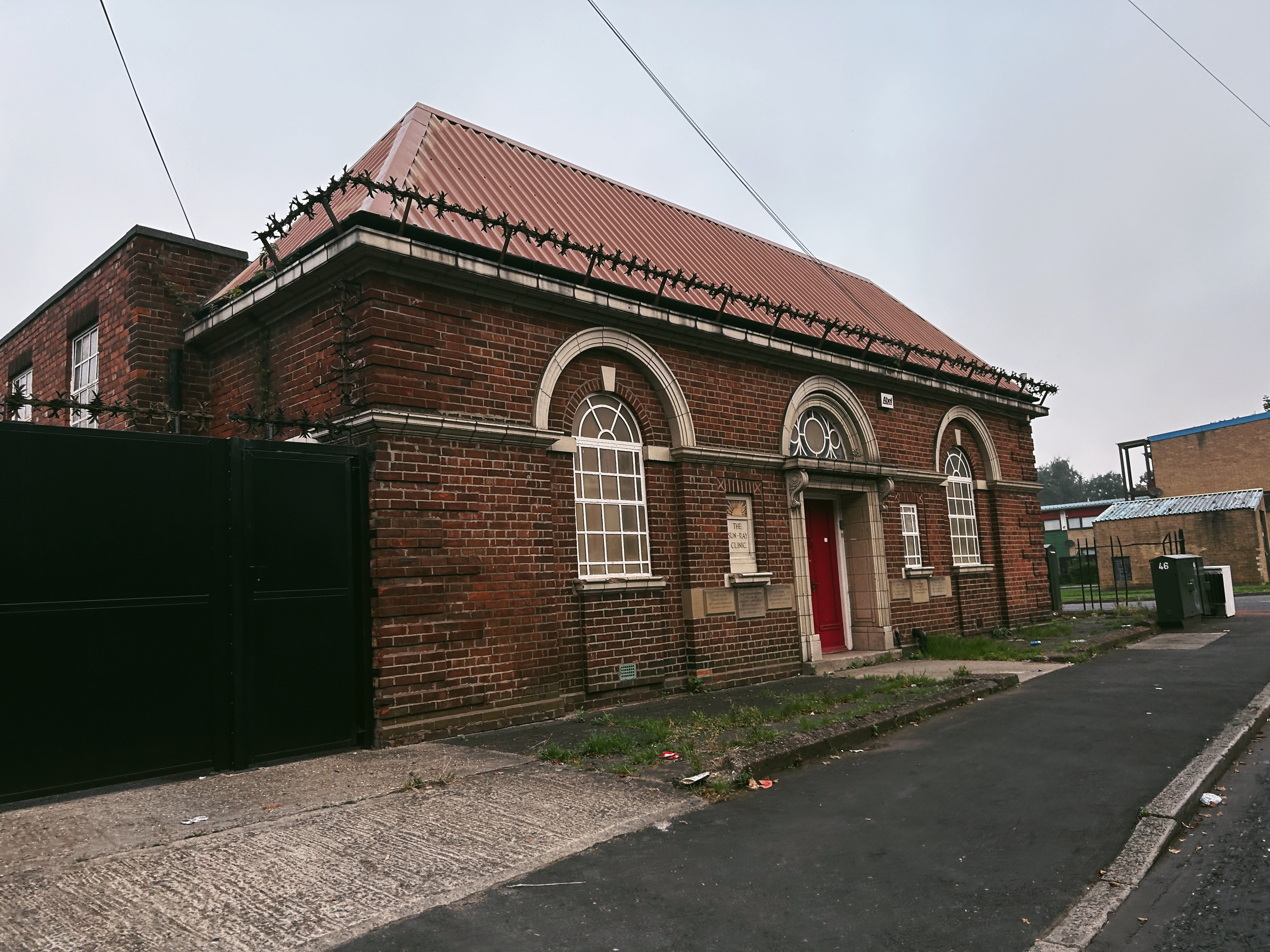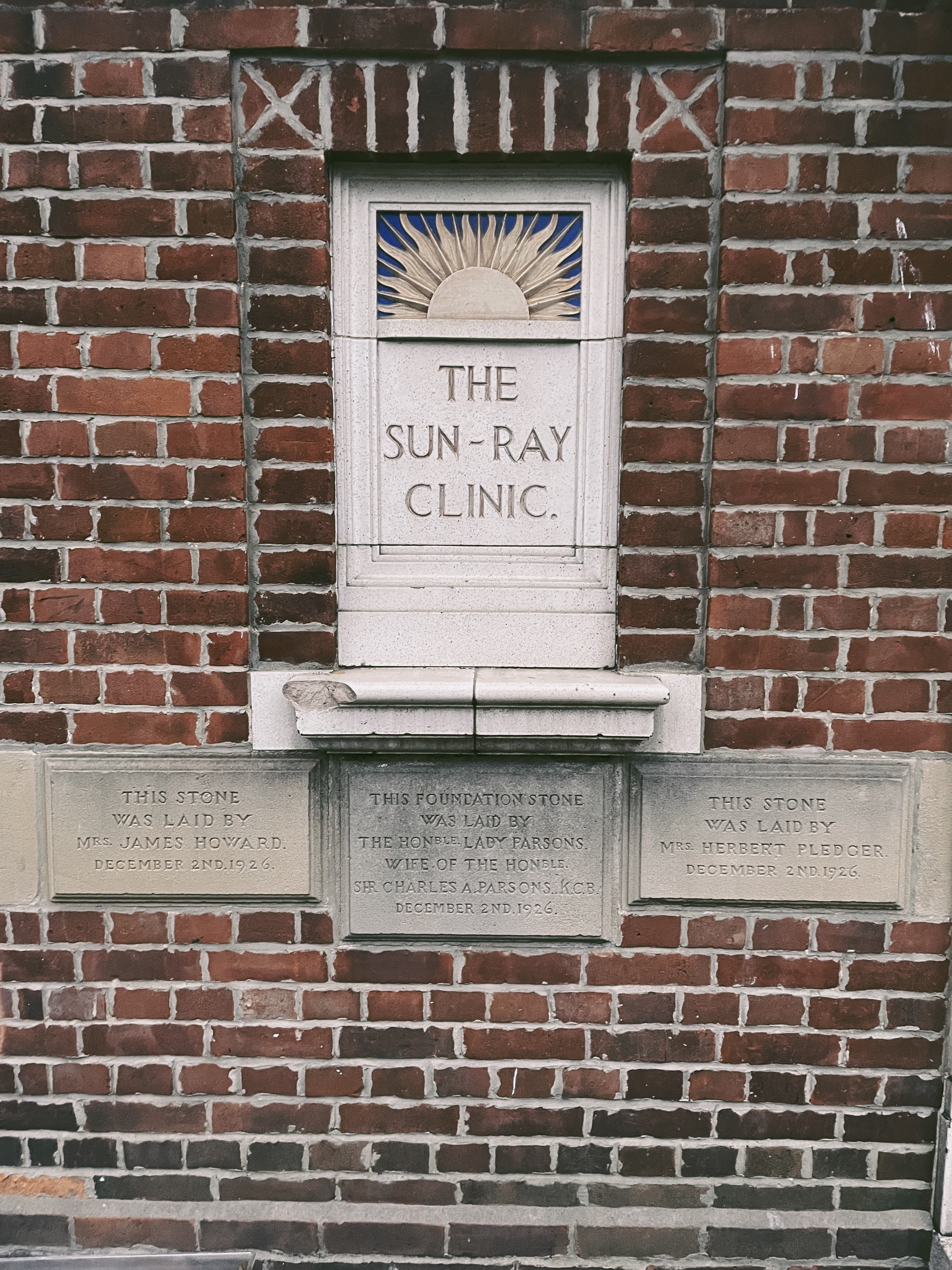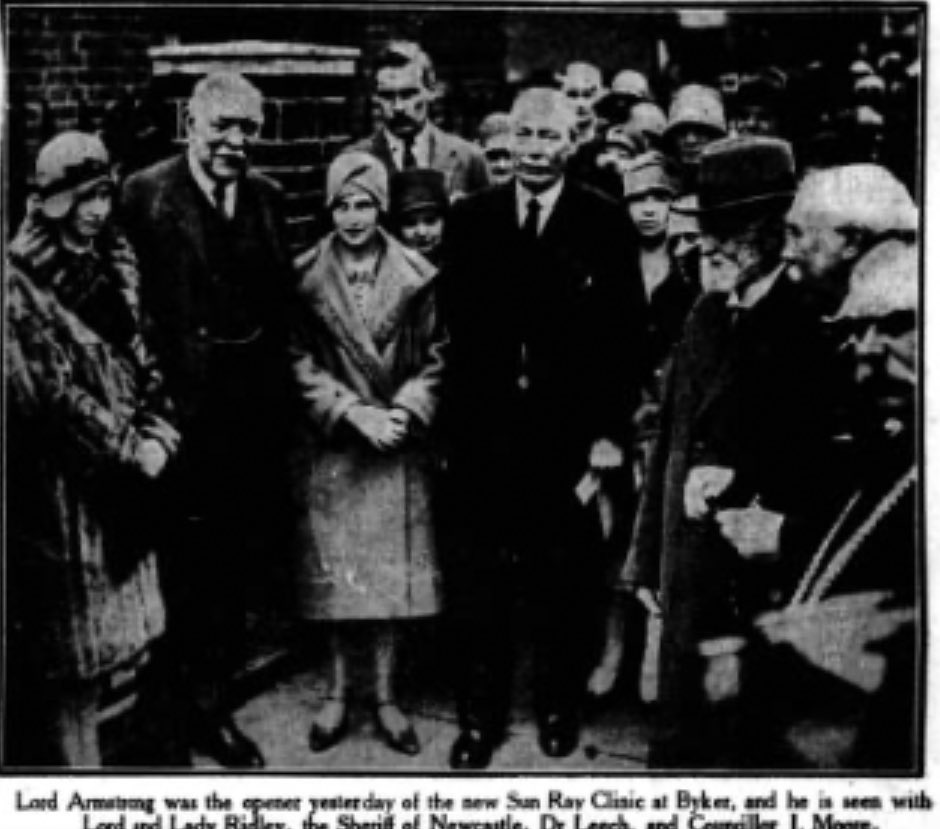
Byker, Newcastle
Byker Sun Ray Clinic
Last Updated:
15 Sept 2023
Byker, Newcastle
This is a
Clinic
54.972142, -1.580199
Founded in
Current status is
Extant
Designer (if known):
Messrs. Harrison & Ash

Local List
This was once one of the most important buildings in Byker.
The Brinkburn Street Sun Ray Clinic was established in 1928 to provide support for children with rickets and skin conditions, at a time when living conditions here were dire. It's one of a number in the area. A sun ray clinic was also operating in Wallsend, at the health centre next to Wallsend Hall.
The treatment exposed young children and adults to ultraviolet light to treat conditions above as well as skin cancer, tuberculosis, and bone & joint diseases to varying results which certainly predated our full understanding of the treatment.
It was to a design by Messrs. Harrison & Ash, and relied on donations from wealthy benefactors such as Thomas Curry (as part of his will), James Spence and the Ridley family who were present upon its opening as seen below. A number of plaques on the front elevation of the building note other donators too - the wife of Byker department store owner Frederick Beavan laid a stone upon its construction in 1926. The wife of Herbert Pledger, a Shields Road businessman as well as the wife of Mrs James Howard who i'm yet to find out about.
Messrs. Harrison, Ash and Blythe (another partner) of Ashington were fairly well known local architects who also designed the Whitley Bay War Memorial and a number of government buildings. The housing estates on Seaton Burn and other areas were designed by the Ashington firm.
The building was open through to the 80s which lays bare the issues it faced even in recent decades. Ultraviolent "sun ray" treatment eventually withered away thanks to advances in vaccines and medication, as well as improvements to hygiene and nutrition. As a result, this building stayed open as a general health centre, supporting parents and their children similar to how a SureStart centre worked in the late 90s and 2000s.
Unfortunately I am not sure what this building is used for in 2023.
Listing Description (if available)


Starting from the first map, we descend down the generations to explore the changing face of Byker from the 60s back to the early 20th century. In the mid 20th century, little had changed in the immediate environs of the clinic illustrated on both maps. The Ford Pottery was still operating, as well as the Riverside Branch which can be seen to the west.
The terraces of working class Byker dominated the vista from the hill to the Ouseburn. Amenities had been popping up at this time though - a picture theatre, churches and a number of local parks were all well bedded in by this time. Within a couple decades this whole area would transform into the Byker Wall development.

The Ordnance Survey from 1916 depicts the site a decade before construction started on the clinic. This part of Byker was dominated by the pottery, and the corner of land was still the edge of the complex at Brinkburn Street.

The exterior of the clinic in 2023.

The rising sun plaque is still gloriously presented on the frontage, alongside a number of plaques dedicated to the benefactors of the clinic.

Lord Armstrong, the Ridley's and councillors present at the opening of the clinic in 1928.
